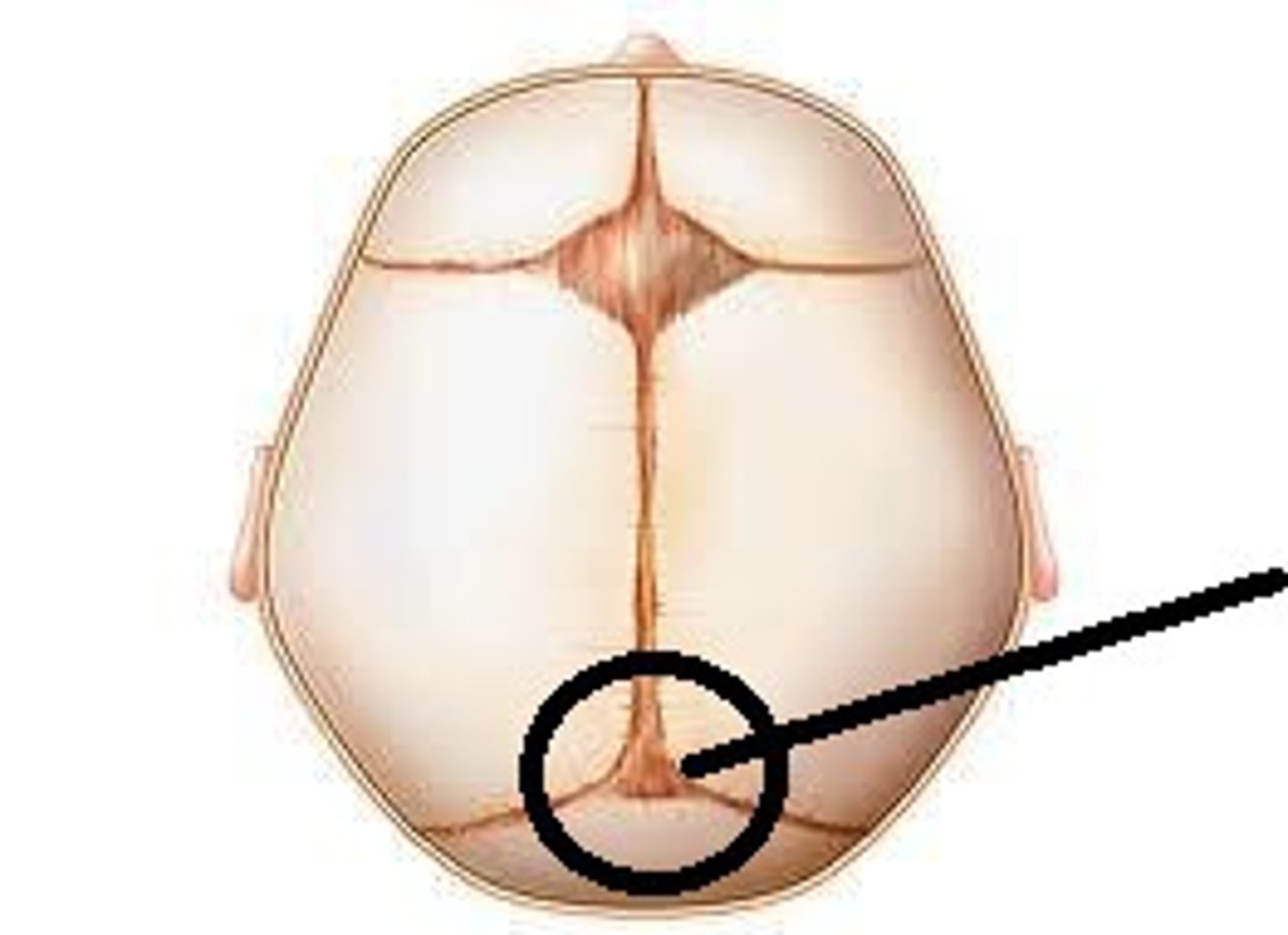(Pediatric Lecture 1) Chapter 16 - Care of the Newborn and Infant: Exam 1
1/16
There's no tags or description
Looks like no tags are added yet.
Name | Mastery | Learn | Test | Matching | Spaced |
|---|
No study sessions yet.
17 Terms
Infant
newborn through 12 mo.
Infancy
28 days to 1 yr.
Cephalocaudal pattern
attainment of skills from head to toe
Proximodistal Pattern
attainment of skills from trunk out (can control arms before fingers, gross motor develops before fine)
Newborn Well Child Visits
Appts. at Newborn, 1, 2, 4, 6, 9, and 23 mo. (American Academy Pediatrics)
Newborn Well Child Visits - Info for Nurses
Involve caregivers
Assess infants on the caregiver's lap
Explain everything to caregivers during the assessment
Auscultate first, while the child is quiet and/or sleeping
Perform the most invasive procedures last
-assessing baby and family
-good rapport with caregivers
-developmental assessments (watching baby)
Anticipatory guidelines
preventative education/counseling focused in
nutrition
safety
environment
behaviors
screening/vaccines
Posterior Fontanelle
smaller, closes between 2 and 3 months

Anterior Fontanelle
larger, closes between 12 and 18 months
Strabismus for Infants
crossed eyes - normal finding until 6 mo. - comes from muscle weakness in eye -
- to inspect pull pinna of ear, pull it back and down
Barrel Chest for Infants
a condition characterized by increased anterior-posterior chest diameter caused by increased functional residual capacity due to air trapping from small airway collapse.
-normal finding for infants (1:1 ratio)
Diaphragmatic Breathing
main driver of respiration until 4 yo.. / look like belly breathers
Respiratory Assessment Findings - Infants
normal to be irregular respirations with occasional pauses / abnormal if pauses are too long , assess respirations for 1 min.
Acrocyanosis
Temporary cyanotic condition, usually in newborns resulting in a bluish color around the lips, hands and fingernails, feet and toenails. May last for a few hours and disappear with warming.
Heart Rate for Infants
80-160, younger the child, the faster it is
Cardiac Normal Findings - Infants
-presence of S3 is normal , listen PMI 4th intercostal space
-asymptomatic murmurs often present and normal
-common to hear murmurs when babies are running fevers
Musculoskeletal Normal Findings - Infancy
-incomplete bone ossification
(bone is formed but not ossified, aids in motor, higher risk for fractures)
-begnin metatarsus adductus is normal (curvature inward of the foot, have parents gently stretch out the foot)